Toerskiën is spannend maar riskant. Lawines, vallen en slecht weer kunnen een leuke dag veranderen in een overlevingssituatie. De sleutel tot veiligheid? Voorbereiding, de juiste uitrusting en goede vaardigheden. Dit is wat je moet weten:
- Lawines: 90% worden veroorzaakt door slachtoffers of hun groep. Leer lawineveiligheid, draag een pieper, sonde en schep, en controleer de voorspellingen.
- Vallen: Vermoeidheid, ijzige omstandigheden en slecht zicht zijn veelvoorkomende oorzaken. Bouw vaardigheden op, blijf fit en gebruik uitrusting die betere controle biedt.
- Uitrustingsproblemen: Gebroken bindingen of ski's kunnen je in de steek laten. Controleer je uitrusting, neem reparatiegereedschap mee en kies duurzame, eenvoudige setups.
- Koud Weer: Hypothermie en bevriezing zijn serieuze bedreigingen. Kleed je in lagen, blijf droog en gebruik geïsoleerde laarzen.
Snowfeet WALKSKI Backcountry Touring Skis bieden een compacte, lichte alternatief voor lange ski's. Met 39 inch zijn ze makkelijker te beheersen, sneller te manoeuvreren en compatibel met warme winterlaarzen - wat je veiliger houdt in zware omstandigheden. Ze zijn ook draagbaar en kosteneffectief, perfect voor backcountry avonturen.
Blijf veilig door de juiste uitrusting te combineren met lawinetraining, routeplanning en regelmatige oefening. De backcountry is onvoorspelbaar, maar met voorbereiding geniet je van de rit en kom je veilig thuis.
Avy Educatie 1: 5 regels voor skiën in de backcountry
Lawine-ongelukken: wat ze veroorzaakt en hoe je veilig blijft
Lawines zijn het gevaarlijkste risico in de backcountry in de Verenigde Staten en eisen meer levens dan welk ander risico ook in deze omgevingen. Wat bijzonder verontrustend is, is dat in 90% van de lawinegerelateerde sterfgevallen de lawine wordt veroorzaakt door het slachtoffer zelf of iemand uit hun groep. Dit maakt het begrijpen van lawinedynamiek niet alleen nuttig - het is essentieel voor overleving.
De snelheid van een lawine is een andere reden waarom ze zo dodelijk zijn. Droge slab-lawines, die verantwoordelijk zijn voor bijna alle lawinedoden, kunnen snelheden van 60–80 mph bereiken in slechts ongeveer 5 seconden na het breken. Zodra de sneeuw begint te bewegen, is er bijna geen tijd om te reageren.
Hoe lawines ontstaan en wat ze veroorzaakt
Lawines gebeuren wanneer drie belangrijke elementen samenkomen: het juiste terrein, een onstabiele sneeuwlaag en triggerende weersomstandigheden. Deze combinatie wordt vaak het "Lawine Driehoek" genoemd. Weten hoe je deze factoren kunt herkennen helpt je inschatten wanneer de omstandigheden gevaarlijk worden.
Terrein is het startpunt voor lawinegevaar. De meeste lawines vinden plaats op hellingen tussen 30° en 45°. Hellingen onder de 30° zijn meestal te vlak voor sneeuw om te schuiven, terwijl hellingen steiler dan 50° vaak sneeuw afwerpen, waardoor de opbouw die nodig is voor een slab niet ontstaat.
De sneeuwlaag zelf is een ander cruciaal onderdeel van de puzzel. Droge plaatlawines ontstaan wanneer een samenhangende laag sneeuw loskomt en als één geheel schuift. Als de binding tussen sneeuwlagen faalt, kan de hele plaat ineens wegschuiven.
Tot slot speelt het weer een grote rol. Wind is eigenlijk de meest voorkomende trigger voor lawines omdat het sneeuw tot wel 10 keer sneller kan afzetten dan alleen sneeuwval, een proces dat "windbelasting" wordt genoemd. Andere factoren zoals zware sneeuwval, plotselinge temperatuurwisselingen en regen op sneeuw kunnen ook de sneeuwlaag destabiliseren.
Essentiële lawineveiligheidsuitrusting en training
Als je het lawinegebied ingaat, zijn er drie uitrustingsstukken die je absoluut nodig hebt: een lawinezender, een sonde en een schep. Elk lid van je groep moet deze tools bij zich dragen - en weten hoe ze te gebruiken.
Lawinezenders zijn elektronische apparaten die een signaal uitzenden tijdens het skiën en overschakelen naar zoekmodus als iemand bedolven raakt. Moderne zenders zijn ongelooflijk nauwkeurig en kunnen een bedolven persoon binnen enkele meters lokaliseren - maar alleen als je ermee geoefend hebt.
Sonar sondes worden gebruikt om de exacte locatie en diepte van een bedolven persoon te bepalen nadat de zender het gebied heeft beperkt. Zodra je ze hebt gevonden, is een stevige schep (bij voorkeur van metaal) cruciaal om snel door dicht lawinemateriaal te graven.
Naast uitrusting is formele training net zo belangrijk. Het volgen van een lawineveiligheidscursus - zoals een Avalanche Skills Training (AST) programma - leert je hoe je terrein leest, de stabiliteit van de sneeuwlaag beoordeelt en levensreddende beslissingen neemt in het backcountry.
Controleer altijd de lawinevoorspellingen via betrouwbare bronnen, zoals de U.S. Avalanche Centers website, voordat je op pad gaat. Als de voorspelling een hoog lawinegevaar aangeeft, is het verstandig je plannen aan te passen of veiliger terrein te kiezen.
Het juiste materiaal en training zijn essentieel, maar je keuze van uitrusting kan ook je kansen op veiligheid vergroten.
Waarom Snowfeet* Short Skis veiliger zijn in lawinegebied
Naast het volgen van veiligheidsprotocollen bieden de Snowfeet* WALKSKI Backcountry Touring Skis een uniek voordeel in lawinegevoelig terrein. Met slechts 100 cm (ongeveer 39 inch) lang, zijn deze ski's ontworpen voor wendbaarheid in krappe, onvoorspelbare omstandigheden.
Scherpe bochten zijn vaak cruciaal bij het navigeren in lawinegebied. Traditionele ski's, die meestal 170–190 cm (67–75 inch) lang zijn, vereisen bredere bochten die je kunnen vertragen. Snowfeet* ski's daarentegen maken scherpe, directe richtingsveranderingen mogelijk - een voordeel dat het verschil kan maken in een noodsituatie.
Hun lichte ontwerp maakt ze ook makkelijker te manoeuvreren. Of je nu naar veiligheid klimt of probeert te ontsnappen aan gevaar, zware traditionele ski's kunnen je vertragen, terwijl Snowfeet* ski's je helpen sneller en efficiënter te bewegen.
Een ander voordeel? Minder blessures tijdens lawines. Kortere ski's draaien minder snel je benen of verergeren verwondingen als je wordt meegesleurd door rollende sneeuw. Bovendien maakt hun compacte formaat het makkelijker om snel van skiën naar lopen over te schakelen wanneer de omstandigheden snel veranderen.
In tegenstelling tot traditionele ski's van merken als Rossignol, Salomon of K2 - ontworpen voor open poedervelden - excelleren Snowfeet* ski's in steil, technisch terrein waar snelle reflexen essentieel zijn. Ze combineren backcountry toermogelijkheden met de wendbaarheid en controle die cruciaal kunnen zijn voor je veiligheid.
Vallen en blessures: hoe je de controle behoudt en crashes voorkomt
Vallen veroorzaken een groot deel van de blessures bij backcountry skiën in de Verenigde Staten. Hoewel lawines vaak de aandacht trekken, zijn vallen veel vaker voorkomend en kunnen ze leiden tot ernstige verwondingen, waardoor je mijlenver van hulp gestrand raakt. Weten wat deze vallen veroorzaakt - en hoe je ze kunt vermijden - is een must voor iedereen die het backcountry ingaat. Net als bij lawineveiligheid vereist het voorkomen van vallen de juiste mix van uitrusting en techniek.
Wat veroorzaakt de meeste valpartijen bij het skiën
Verschillende factoren dragen bij aan vallen in het backcountry, en ze begrijpen is de sleutel om rechtop te blijven.
- IJzige omstandigheden: Wanneer de temperaturen stijgen en dalen, kan sneeuw een harde korst of ijzige plekken vormen die je kanten kunnen verrassen. Traditionele ski's, zoals die van merken als Rossignol of Salomon, zijn moeilijker te beheersen op deze gladde oppervlakken vanwege hun lengte.
- Vermoeidheid: Vermoeide benen betekenen slordige techniek en tragere reacties. Het dragen van zware toerspullen maakt de uitputting alleen maar erger, vooral bij het navigeren van steile beklimmingen of het doorbreken van verse sneeuw.
- Slechte zichtbaarheid: Flat light, mist of plotselinge weersveranderingen kunnen obstakels en lastig terrein verbergen, waardoor je weinig tijd hebt om te reageren. Zelfs ervaren skiërs vinden het moeilijk om de controle te houden als ze niet kunnen zien wat er voor hen ligt.
- Onverwachte terreinveranderingen: Verborgen stenen, plotselinge afgronden of veranderingen in sneeuwdiepte kunnen zelfs de beste skiërs uit balans brengen. Lange, zware ski's maken het moeilijker om snel te manoeuvreren in deze situaties.
- Uitrustingsproblemen: Bindingen die op het verkeerde moment loskomen - of niet loskomen wanneer ze dat wel zouden moeten - kunnen leiden tot nare valpartijen. Zware schoenen in combinatie met lange ski's maken het ook moeilijker om je balans te herstellen als het misgaat.
Om deze risico's aan te pakken, heb je uitrusting nodig die wendbaarheid en controle prioriteert - maak kennis met Snowfeet* WALKSKI.
Hoe Snowfeet* WALKSKI helpt vallen te voorkomen
Snowfeet* WALKSKI Backcountry Touring Ski's zijn ontworpen om veelvoorkomende valoorzaken aan te pakken. Met slechts 39 inch lang houden deze ski's je voeten dichter bij elkaar, wat de balans verbetert, de belasting op je gewrichten vermindert en het makkelijker maakt om te herstellen van plotselinge terreinveranderingen. In tegenstelling tot traditionele ski's, die je voeten uit elkaar dwingen en het balanceringsherstel lastiger maken, biedt Snowfeet* je een stabieler platform.
Snelle richtingsveranderingen zijn een ander groot voordeel. Het kortere ontwerp laat je scherpe bochten maken of obstakels zijwaarts ontwijken met gemak, waardoor je de wendbaarheid hebt om obstakels te vermijden voordat ze een probleem worden.
Gemakkelijker herstel zit ingebouwd in het ontwerp. Korte ski's blijven minder snel haken aan obstakels en ze belasten je knieën en enkels minder als je valt. Met minder hefboomwerking tegen je gewrichten is de kans op letsel kleiner.
De loopmogelijkheden van Snowfeet* ski's zijn een echte game-changer. Als de omstandigheden te onzeker worden om te skiën, kun je ze gebruiken als sneeuwschoenen, waardoor je grip en controle behoudt totdat je weer op veiliger terrein bent.
Hoewel uitrusting zoals Snowfeet* risico's kan verminderen, is het ontwikkelen van je vaardigheden net zo belangrijk.
Vaardigheden opbouwen en blessures voorkomen
Goede techniek en voorbereiding gaan hand in hand met de juiste uitrusting als het gaat om veilig blijven in de backcountry.
- Begin op makkelijker terrein: Als je nieuw bent in backcountry skiën of nieuwe uitrusting test, blijf dan op mildere hellingen totdat je je comfortabel voelt. Het is beter om je vertrouwen geleidelijk op te bouwen.
- Blijf in vorm: Sterke benen, een goede balans en een goede conditie maken een groot verschil. Oefeningen die je core versterken en je stabiliteit verbeteren, zorgen direct voor betere controle op de piste.
- Leer veilig vallen: Weten hoe je moet vallen kan de kans op ernstig letsel verkleinen. Houd je armen voor je, probeer bergop te vallen in plaats van bergaf, en probeer je lichaam te ontspannen in plaats van de val te weerstaan.
- Test je uitrusting op verschillend terrein: Of je nu Snowfeet* ski's gebruikt of een traditionele setup, neem de tijd om te wennen aan hoe je uitrusting omgaat met verschillende sneeuwcondities. Oefen op ijs, poedersneeuw en korstige sneeuw om je voor te bereiden op alles wat je kunt tegenkomen.
- Blijf alert: Scan voortdurend het terrein voor je op veranderingen in sneeuwkleur of textuur die gevaren kunnen signaleren. Let op stenen, boomstammen of andere obstakels en houd je snelheid onder controle om jezelf meer tijd te geven om te reageren.
Uitval van apparatuur en verdwalen: hoe je voorbereid blijft
Het betreden van het backcountry biedt adembenemende uitzichten en spannende avonturen, maar brengt ook risico's met zich mee. Uitval van apparatuur en navigatiefouten kunnen een leuke dag veranderen in een gevaarlijke beproeving. Wanneer je ver van hulp bent, kan iets eenvoudigs als een gebroken binding of een verkeerde afslag je achterlaten in barre omstandigheden. De beste manier om deze scenario's te vermijden? Betrouwbare uitrusting en goede voorbereiding.
Veelvoorkomende problemen met backcountry uitrusting
Backcountry skiën brengt zijn eigen uitdagingen met uitrusting met zich mee. Hier zijn enkele van de meest voorkomende problemen die je kunt tegenkomen:
- Bindingstoringen: Toerbindingen, zoals die van Dynafit of Marker, hebben ingewikkelde bewegende onderdelen die kunnen bevriezen, breken of defect raken - vooral bij extreme kou. IJsvorming kan ook hun loslaatmechanismen verstoren, waardoor je vast komt te zitten of erger, gewond raakt.
- Gebroken ski's: Lange ski's van merken zoals K2 of Atomic zijn gevoeliger om te breken wanneer ze verborgen stenen raken of harde landingen maken. Een gebroken ski in het backcountry betekent vaak een zware wandeling terug.
- Problemen met schoenen: Toerschoenen zijn weliswaar stevig, maar zijn niet immuun voor scheuren, kapotte gespen of het verliezen van waterdichtheid bij vrieskou. Natte en koude voeten kunnen snel leiden tot bevriezing of onderkoeling.
- Verkeerde uitrusting voor het terrein: Ski's ontworpen voor geprepareerde pistes kunnen een nachtmerrie zijn in backcountry poeder, ijs of onvoorspelbare sneeuw. Veel skiërs leren dit op de harde manier wanneer hun uitrusting onhandelbaar wordt in moeilijke omstandigheden.
Deze problemen benadrukken de noodzaak van duurzaam, veelzijdig materiaal dat de onvoorspelbaarheid van het backcountry aankan.
Waarom Snowfeet* WALKSKI Opvalt
Snowfeet* WALKSKI Backcountry Touring Skis pakken veel van deze veelvoorkomende problemen aan met een eenvoudig en duurzaam ontwerp. Met slechts 39 inch lang zijn ze veel minder breekbaar dan traditionele ski's. Hun compacte formaat vermindert de hefkrachten die ski's doen breken op stenen of bij harde landingen.
Het eenvoudige binding systeem is een ander belangrijk voordeel. In tegenstelling tot complexe toerski-bindingen hebben Snowfeet* bindingen minder onderdelen, wat betekent dat er minder mis kan gaan. En als er aanpassingen nodig zijn, zijn die gemakkelijk te doen met basisgereedschap.
Snowfeet* ski's blinken ook uit op het gebied van draagbaarheid en veelzijdigheid. Als de omstandigheden onveilig worden om te skiën, kun je ze gemakkelijk meenemen en gebruiken als sneeuwschoenen om lastig terrein te navigeren. Deze aanpasbaarheid kan een game-changer zijn in moeilijke situaties.
Tot slot elimineert hun compatibiliteit met winterlaarzen de noodzaak voor dure, zware toerschoenen. Winterlaarzen zijn niet alleen warmer en comfortabeler, maar ook minder gevoelig voor scheuren of defecten onder extreme omstandigheden.
Tips voor onderhoud van uitrusting en navigatie
Het voorkomen van problemen met uitrusting en navigatie begint met voorbereiding. Zo blijf je potentiële problemen voor:
- Inspecteer Je Uitrusting: Controleer voor elke trip je bindingen, ski's en schoenen. Let op scheuren, ijsvorming of iets wat niet klopt. Een snelle check van 10 minuten kan je later uren problemen besparen.
- Pak Reparatiespullen In: Voor Snowfeet* ski's neem je essentiële spullen mee zoals extra banden, een multitool en ducttape. Gebruik je traditionele uitrusting, dan heb je misschien reserve bindingonderdelen, skitips en gespecialiseerde gereedschappen nodig.
- Wees Navigatie-Klaar: Draag altijd een GPS mee met extra batterijen en een papieren kaart als backup. Download offline kaarten op je telefoon voor het geval je geen bereik hebt.
- Deel Je Plannen: Laat iemand je route, verwachte terugkeertijd en noodcontacten weten. Als plannen veranderen, werk ze bij. Deze eenvoudige stap kan levensreddend zijn.
- Houd het Weer Goed in de Gaten: Het bergweer kan snel omslaan. Wat 's ochtends veilig is, kan 's middags gevaarlijk worden. Houd de omstandigheden in de gaten en zorg altijd voor een nooduitgangsplan.
- Oefen Eerst: Test je uitrusting onder veiligere omstandigheden voordat je diep de wildernis ingaat. Of je nu Snowfeet* ski's of traditionele uitrusting gebruikt, weten hoe het presteert in verschillende sneeuwsoorten kan je later verrassingen besparen.
Goed voorbereid zijn is niet alleen slim - het is essentieel bij het betreden van de onvoorspelbare schoonheid van de wildernis. Een beetje planning en de juiste uitrusting kunnen het verschil maken.
sbb-itb-17ade95
Gevaren van koud weer: Hypothermie en bevriezing voorkomen
Koud weer in de wildernis is niet alleen ongemakkelijk - het kan ronduit gevaarlijk zijn. Hypothermie en bevriezing zijn twee ernstige bedreigingen die een epische dag in de sneeuw kunnen veranderen in een levensbedreigende situatie. Weten hoe je deze aandoeningen herkent, voorkomt en erop reageert is niet alleen nuttig - het kan je leven redden.
Het herkennen en voorkomen van kou-gerelateerde verwondingen
Hypothermie ontstaat wanneer je kerntemperatuur onder normaal daalt, terwijl bevriezing optreedt wanneer huid en onderliggende weefsels bevriezen. Beide aandoeningen sluipen vaak ongemerkt binnen, vooral als je moeilijke terreinen doorkruist of strijdt tegen barre weersomstandigheden.
Het geheim om veilig te blijven? Herken de signalen vroeg. Medische professionals gebruiken een handig geheugensteuntje genaamd de "Umbles" - struikelen, mompelen, stuntelen en mopperen - om symptomen van hypothermie te herkennen. Hier is een overzicht van waar je op moet letten:
| Hypothermie Fase | Kern Temperatuur | Tekenen & Symptomen |
|---|---|---|
| Lichte Onderkoeling | 99°F – 97°F | Normaal; rillen begint. Koud gevoel, kippenvel en gevoelloze handen. |
| 97°F – 95°F | Rillen wordt sterker. Taken die fijne motoriek vereisen worden moeilijker. | |
| Matige Onderkoeling | 95°F – 93°F | Intens rillen, onhandige bewegingen, milde verwarring, onverstaanbare spraak. |
| 93°F – 90°F | Hevig rillen, trage gedachten, struikelen en geheugenproblemen. | |
| Ernstige Onderkoeling | 90°F – 86°F | Rillen stopt; de huid kan blauw of opgezwollen worden. Spierstijfheid, verwarring en niet kunnen lopen. |
Als het om bevriezing gaat, zijn je extremiteiten - vingers, tenen, neus en oren - het meest kwetsbaar. Deze gebieden verliezen snel warmte, waardoor ze als eerste tekenen van problemen laten zien. Bevriezing kan beginnen als frostnip, wat oppervlakkig is, maar kan doorgaan tot diepe weefselschade als het wordt genegeerd.
Houd je maatje (en jezelf) in de gaten op tekenen zoals wasachtige, bleke of grijsachtige huid die stijf of gevoelloos aanvoelt. Als je iets ongewoons opmerkt, stop dan onmiddellijk en verwarm het getroffen gebied voorzichtig - tenzij dat je in groter gevaar brengt.
Om deze risico's voor te blijven, richt je je op het correct aanbrengen van lagen. Begin met een vochtafvoerende basislaag, voeg een isolerende tussenlaag toe en eindig met een waterdichte buitenlaag. En sla de alcohol over - het verstoort het vermogen van je lichaam om warm te blijven en goede beslissingen te nemen.
Hoe Snowfeet* Je Warmer Houdt
Uitrusting kan je avonturen in koude omstandigheden maken of breken, vooral als het gaat om warm blijven. Daar springt Snowfeet* uit, omdat het helpt de risico's op onderkoeling en bevriezing te verminderen.
Neem bijvoorbeeld de Snowfeet* WALKSKI Backcountry Touring Skis. In tegenstelling tot traditionele setups van merken als Salomon of Dynafit werken deze ski's met je gewone geïsoleerde winterlaarzen in plaats van beperkende skischoenen. Waarom is dat zo belangrijk? Omdat geïsoleerde laarzen van merken als Sorel, Columbia of The North Face zijn ontworpen om je voeten warm en droog te houden, zelfs op lange, koude dagen.
Met Snowfeet* zit je niet vast aan skispecifieke schoenen die vaak warmte opofferen voor prestaties. In plaats daarvan krijg je een betere circulatie en minder kans op gevoelloze tenen - belangrijke factoren om bevriezing te voorkomen. Bovendien zorgen warme, droge voeten ervoor dat je je kunt concentreren op wat echt telt: veilig navigeren, lawinegevaar inschatten en genieten van de dag.
Nog een voordeel? Veelzijdigheid. Winterlaarzen laten je gemakkelijk overschakelen naar wandelen of sneeuwschoenwandelen als de skiomstandigheden verslechteren. Ze gaan ook beter om met vocht dan traditionele skischoenen, waardoor je voeten droog en comfortabel blijven. En als je voeten droog zijn, werkt laagjes dragen beter om de warmte vast te houden.
Dus met de juiste uitrusting en een beetje planning kun je veilig, warm en klaar blijven voor wat de backcountry ook op je pad brengt.
Snowfeet* Short Skis vs Traditionele ski's en Snowboards
Laten we eens nader bekijken hoe Snowfeet* korte ski's zich verhouden tot traditionele ski's en snowboards. Of je nu backcountry trails aanpakt of gewoon op zoek bent naar een veiligere, gemakkelijkere rit, je uitrusting kan het verschil maken. Jarenlang domineerden grote namen zoals Rossignol, K2, Burton en Salomon de wintersportwereld met hun lange ski's en snowboards. Maar hun grootte en complexiteit kunnen soms tegen je werken, vooral in lastig terrein. Snowfeet* korte ski's bieden daarentegen een lichtgewicht, wendbaar alternatief dat veel van deze uitdagingen aanpakt.
Traditionele lange ski's brengen hun eigen risico's met zich mee, vooral door hun lengte. Snowboards zijn leuk, maar houden beide voeten vast, waardoor snelle richtingsveranderingen lastiger zijn wanneer je ze het meest nodig hebt.
Snowfeet* WALKSKI Backcountry Touring Skis, slechts 99 cm (39 inch) lang, zijn ontworpen voor krappe plekken, scherpe bochten en het moeiteloos ontwijken van obstakels. Als je snel uit de buurt van lawinegevaar moet sturen of een smal pad moet navigeren, kan deze wendbaarheid een echte game-changer zijn.
Zij-aan-zij vergelijkingsschema
| Kenmerk | Snowfeet* korte ski's | Traditionele lange ski's | Traditionele Snowboards |
|---|---|---|---|
| Lengte | 39 inch (99 cm) | 63–71 inch (160–180 cm) | 59–65 inch (150–165 cm) |
| Gewicht | 4.4 lbs per paar | 8–12 lbs per paar | 6–10 lbs per paar |
| Schoen veelzijdigheid | Gewone winterlaarzen | Alleen gespecialiseerde skischoenen | Alleen snowboardlaarzen |
| Draagbaarheid | Past in een rugzak | Vereist een skitas/dakdrager | Vereist een snowboardtas |
| Wendbaarheid | Uitstekend in krappe ruimtes | Beperkt in smal terrein | Zeer beperkte draaicirkel |
| Lawineveiligheid | Maakt snelle loskoppeling in noodgevallen mogelijk | Moeilijker los te maken | Niet ontworpen voor snelle verwijdering |
| Valherstel | Snel herstel met onafhankelijke beenbeweging | Langzamer herstel omdat beide ski's worden gebruikt | Herstel is moeilijker door vaste stand |
| Wandelmogelijkheden | Maakt natuurlijk lopen met winterlaarzen mogelijk | Veroorzaakt vaak ongemakkelijk lopen op schoenen | Niet praktisch voor wandelen |
| Prijsklasse | ~$675 | ~$800–$2,000+ (skis, bindings, boots) | ~$600–$1,500+ (board, bindings, boots) |
Snowfeet* short skis blinken ook uit in duurzaamheid en eenvoud. In tegenstelling tot traditionele uitrustingen die vertrouwen op complexe bindingen met veel bewegende onderdelen (die kunnen bevriezen, breken of defect raken), gebruikt Snowfeet* een eenvoudig bandsysteem. Dit ontwerp verkleint de kans op storingen en maakt snelle reparaties met basisgereedschap mogelijk - geen gespecialiseerde reparatiediensten nodig.
Een ander opvallend kenmerk is de compatibiliteit met schoenen. Traditionele ski- en snowboarduitrustingen vereisen gespecialiseerde schoenen, wat de bloedsomloop kan beperken en het risico op bevriezing kan verhogen. Snowfeet* werkt met gewone geïsoleerde winterlaarzen van merken zoals Sorel, Columbia, of Merrell. Dit betekent dat je voeten warmer, droger en comfortabeler blijven tijdens lange tochten in de natuur.
Draagbaarheid is een ander groot pluspunt. Snowfeet* past gemakkelijk in een gewone rugzak, waardoor het eenvoudig mee te nemen is en je toegang geeft tot afgelegen gebieden die met zwaardere uitrusting misschien ontoegankelijk zijn. Deze compacte maat verhoogt ook de wendbaarheid, helpt je sneller te herstellen na een val en vermindert de belasting op je knieën en enkels. Lange ski's kunnen daarentegen te veel kracht uitoefenen als ze blijven haken, wat het risico op blessures vergroot.
Wanneer je lastig terrein doorkruist, biedt Snowfeet* een naadloze overgang tussen skiën en wandelen. Of je nu rotsachtige stukken oversteekt of door dichte bomen weeft, je kunt comfortabel lopen in je winterschoenen zonder gedoe met het wisselen van uitrusting. Traditionele setups kunnen niet tippen aan dat gemak.
Tot slot, laten we het over kosten hebben. Een traditionele backcountry-uitrusting van merken als Atomic, Volkl of Lib Tech kan je gemakkelijk tussen de $1.500 en $3.000 kosten als je ski's, bindingen, schoenen en veiligheidsuitrusting meerekent. Snowfeet* WALKSKI, geprijsd rond de $675, is een veel budgetvriendelijkere optie. Bovendien bespaar je nog meer omdat je je bestaande winterschoenen kunt gebruiken – geld dat je kunt besteden aan lawinetraining, extra veiligheidsuitrusting of toekomstige avonturen.
Backcountry skiën veiliger en leuker maken
Backcountry skiën kan zowel spannend als veilig zijn als je goed voorbereid bent. Het draait allemaal om slim plannen en de juiste uitrusting die in jouw voordeel werkt. Hieronder behandelen we enkele essentiële veiligheidstips en waarom Snowfeet* misschien wel de game-changer is die je nog niet kende.
Belangrijkste veiligheidstips om te onthouden
Als het gaat om veilig blijven in het buitengebied, is voorbereiding alles. Hier zijn enkele belangrijke richtlijnen om in gedachten te houden:
- Volg lawine-educatie. Volg gecertificeerde cursussen om te leren hoe je sneeuwcondities beoordeelt, terrein leest en reddingen uitvoert. Deze vaardigheden zijn onmisbaar in lawinegevoelige gebieden.
- Blijf op de hoogte van de weersvoorspellingen. Controleer betrouwbare weer- en lawinerapporten, zoals die van de National Weather Service of lokale lawinecentra, voordat je op pad gaat. Zo maak je weloverwogen beslissingen.
- Reis met ervaren partners en blijf verbonden. Spreek altijd van tevoren je route af, gebruik handgebaren om te communiceren en blijf bij elkaar in risicovolle zones. Tweeweg-radio's of satellietcommunicators zijn redders in nood wanneer het mobiele netwerk onbetrouwbaar is.
- Oefen je noodvaardigheden. Weten hoe je je lawinezender, sonde en schep onder druk gebruikt is cruciaal. Oefen regelmatig met het zoeken naar zenders en reddingstechnieken om scherp te blijven.
- Begin rustig. Haast je niet in steil of technisch terrein. Begin met makkelijkere routes en bouw je vaardigheden en vertrouwen geleidelijk op.
- Pak voor het onverwachte. Neem extra lagen, voedsel en een noodschuilplaats mee om voorbereid te zijn op plotselinge weersveranderingen.
Deze stappen, gecombineerd met de juiste uitrusting, kunnen je backcountry-avonturen veiliger en leuker maken.
Waarom Snowfeet* de beste uitrusting is
Laten we het hebben over Snowfeet* WALKSKI en waarom het een slimme keuze is voor backcountry-liefhebbers. Dit maakt het een opvallende optie:
- Snelle wendbaarheid. Het compacte ontwerp van 100 cm maakt scherpe bochten makkelijk, zodat je obstakels of gevaren kunt ontwijken. Traditionele ski's zijn veel langer en daardoor lastiger te beheersen bij snelle reacties.
- Eenvoudig en betrouwbaar ontwerp. Snowfeet* gebruikt een eenvoudig bandsysteem met minder onderdelen die kunnen falen. Bovendien kunnen reparaties ter plekke worden uitgevoerd met basisgereedschap - geen ski-technicus nodig.
- Naadloze overgang tussen terreinen. In tegenstelling tot zware setups werkt Snowfeet* met gewone winterlaarzen, waardoor het makkelijk is om te wisselen tussen skiën en wandelen. Of je nu rotsachtige paden of dichte bossen doorkruist, je beweegt natuurlijk.
- Verminderd risico op blessures. De kortere lengte en de onafhankelijke beenbeweging van Snowfeet* helpen de belasting op je knieën en enkels te minimaliseren. Struikelen leidt minder snel tot ernstige verwondingen en het herstel na een val gaat sneller.
- Warmere, comfortabelere schoenen. Snowfeet* combineert met geïsoleerde winterlaarzen van merken als Sorel, Columbia of Merrell, zodat je voeten warm blijven en de bloedsomloop verbetert - geen bevroren tenen meer in stijve skischoenen.
- Budgetvriendelijke optie. Voor ongeveer $675 is Snowfeet* een betaalbaarder alternatief voor traditionele setups. Zo houd je extra geld over voor lawinecursussen, veiligheidsuitrusting of zelfs een begeleide trip.
- Draagbaar en klaar voor avontuur. Door het compacte formaat kun je Snowfeet* in een gewone rugzak meenemen. Deze draagbaarheid maakt het makkelijker om toegang te krijgen tot afgelegen of uitdagend terrein dat met zwaardere uitrusting misschien ontoegankelijk is.
Veelgestelde vragen
Wat is de beste manier om je voor te bereiden op lawinegevaar voordat je gaat toerskiën?
Voordat je de bergen in gaat waar lawines kunnen voorkomen, zijn voorbereiding en kennis je beste hulpmiddelen. Begin met het controleren van de laatste lawinevoorspellingen en de omstandigheden voor het gebied waar je wilt skiën. Het begrijpen van het terrein is net zo belangrijk - leer hoe je de sneeuwstabiliteit beoordeelt en blijf uit de buurt van hellingen die eerder kunnen schuiven, zoals steile of door de wind beladen gebieden.
Ga de backcountry niet in zonder de juiste uitrusting. Pak minimaal een pieper, sonde en schep in - en zorg dat je weet hoe je ze moet gebruiken. Beter nog, volg een lawineveiligheidscursus. Deze cursussen bieden praktijkervaring en leren je hoe je slimme, geïnformeerde beslissingen neemt wanneer het er echt toe doet.
Door goed geïnformeerd, voorbereid en goed uitgerust te zijn, verklein je niet alleen het risico op ongelukken, maar maak je je backcountry avonturen ook veiliger en veel leuker.
Wat maakt Snowfeet WALKSKI Backcountry Touring Skis veiliger en makkelijker te gebruiken dan traditionele lange ski's?
Snowfeet WALKSKI Backcountry Touring Skis zijn ontworpen met een compact en lichtgewicht ontwerp dat het navigeren door moeilijk backcountry terrein veel makkelijker maakt. Hun kleinere formaat biedt meer controle en vermindert vermoeidheid, vooral bij smalle plekken of oneffen gebieden. Voor beginners betekent dit minder angst en meer vertrouwen in onvoorspelbare omstandigheden.
Nog een groot pluspunt? Ze zijn super draagbaar. Dit maakt ze een uitstekende keuze voor beklimmingen en afdalingen, waar zware uitrusting soms meer een last kan zijn - of zelfs een veiligheidsrisico. Met Snowfeet WALKSKI vind je het makkelijker om te manoeuvreren, voel je je stabieler en heb je een algehele betere ervaring vergeleken met traditionele ski's. Bovendien blijf je veiliger terwijl je bezig bent.
Welke vaardigheden en uitrusting heb ik nodig om veilig te blijven en om te gaan met veelvoorkomende backcountry ski-ongelukken zoals vallen of problemen met de uitrusting?
Veilig blijven tijdens het backcountry skiën draait om de juiste vaardigheden en uitrusting. Allereerst heb je lawineveiligheidstraining, goede navigatievaardigheden en de juiste skitechnieken nodig. Dit zijn niet zomaar opties - ze zijn cruciaal om gevaren te vermijden en verrassingen met vertrouwen aan te kunnen.
Wat uitrusting betreft, zijn er een paar essentiële dingen die je nooit zonder moet meenemen de backcountry in: een lawinepieper, een schep, een sonde en een EHBO-kit. En als je op zoek bent naar iets om je avontuur soepeler te maken, bekijk dan de _Snowfeet WALKSKI Backcountry Touring Skis (100 cm)_*. Deze ski's zijn lichtgewicht, gemakkelijk mee te nemen en bieden uitstekende controle, wat ze een geweldig alternatief maakt voor traditionele ski's of snowboards die soms onhandig kunnen aanvoelen. Bovendien helpt hun compacte ontwerp vermoeidheid te verminderen, waardoor je scherp blijft en klaar bent om uitdagend terrein aan te pakken. Met de juiste voorbereiding en uitrusting kun je veiliger en met meer gemoedsrust genieten van backcountry skiën.
Gerelateerde blogposts
- Hoe kies je ski's voor backcountry beginners (veiligheid eerst!) - 2025
- Moet ik een lawineveiligheidscursus volgen voordat ik ga backcountry skiën?
- Terreinvalkuilen bij backcountry skiën: wat ze zijn en hoe je ze kunt vermijden
- Hoe kies je een veilige backcountry skiroute: tips voor het inschatten van risico's







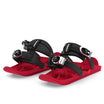
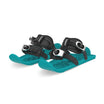












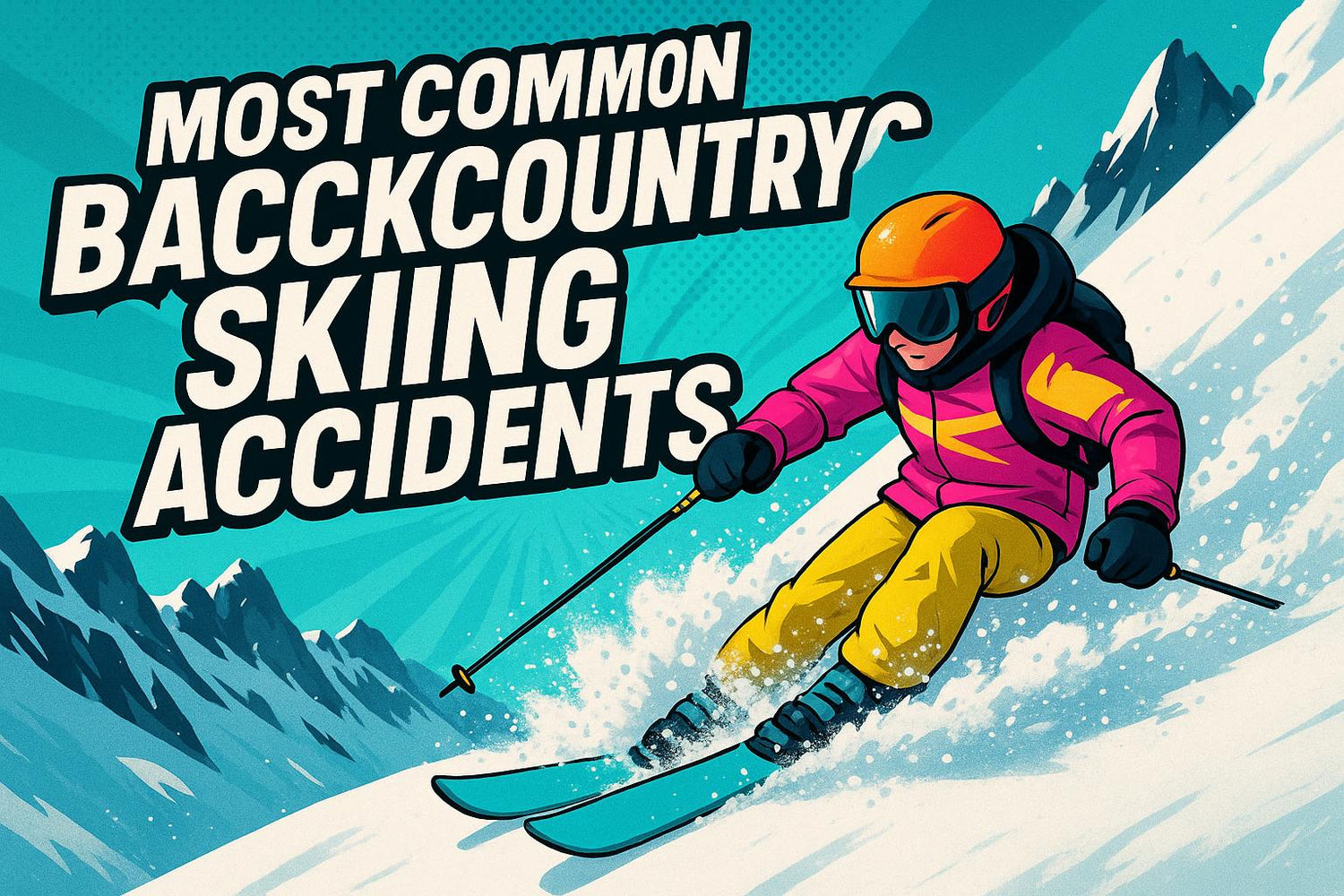
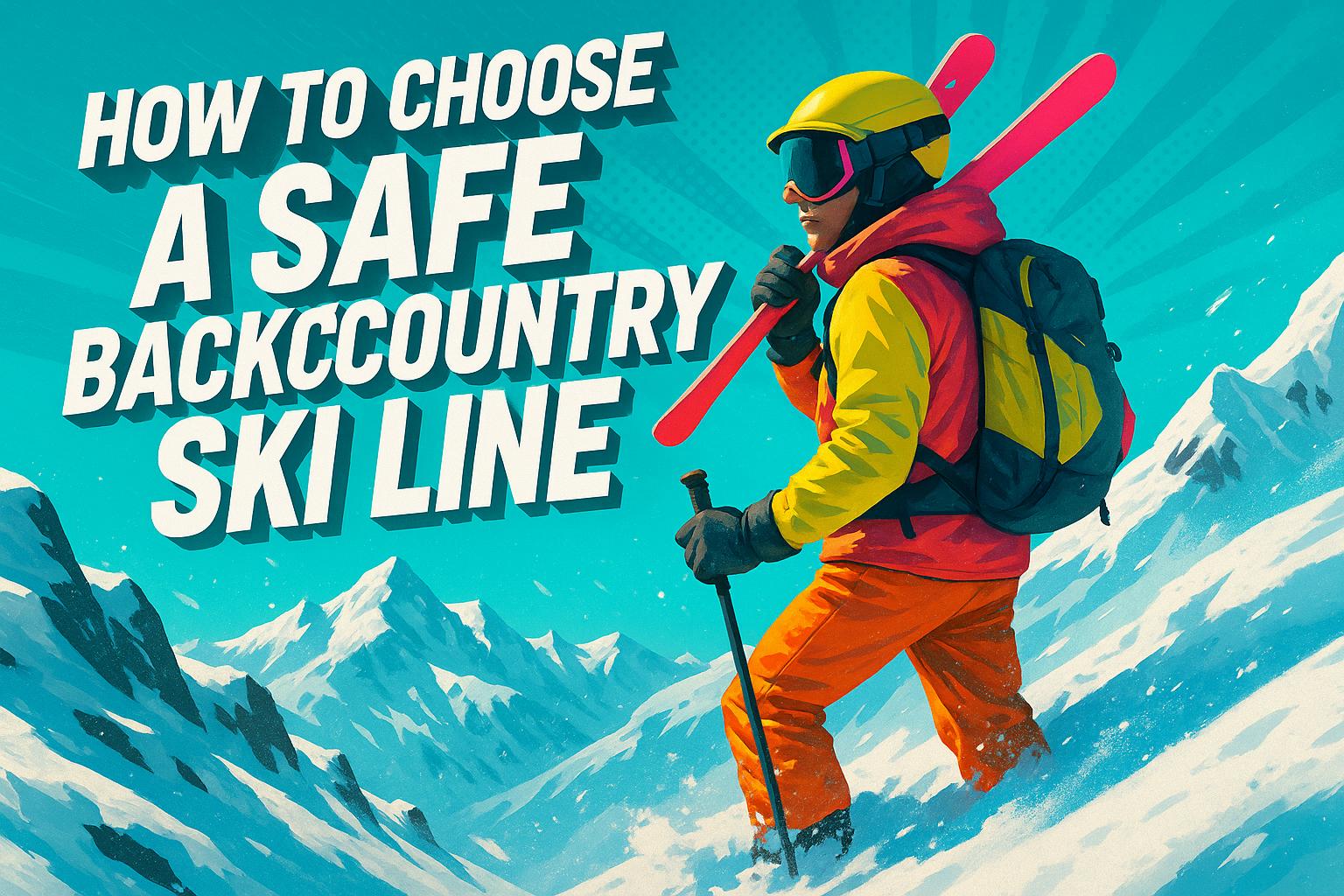
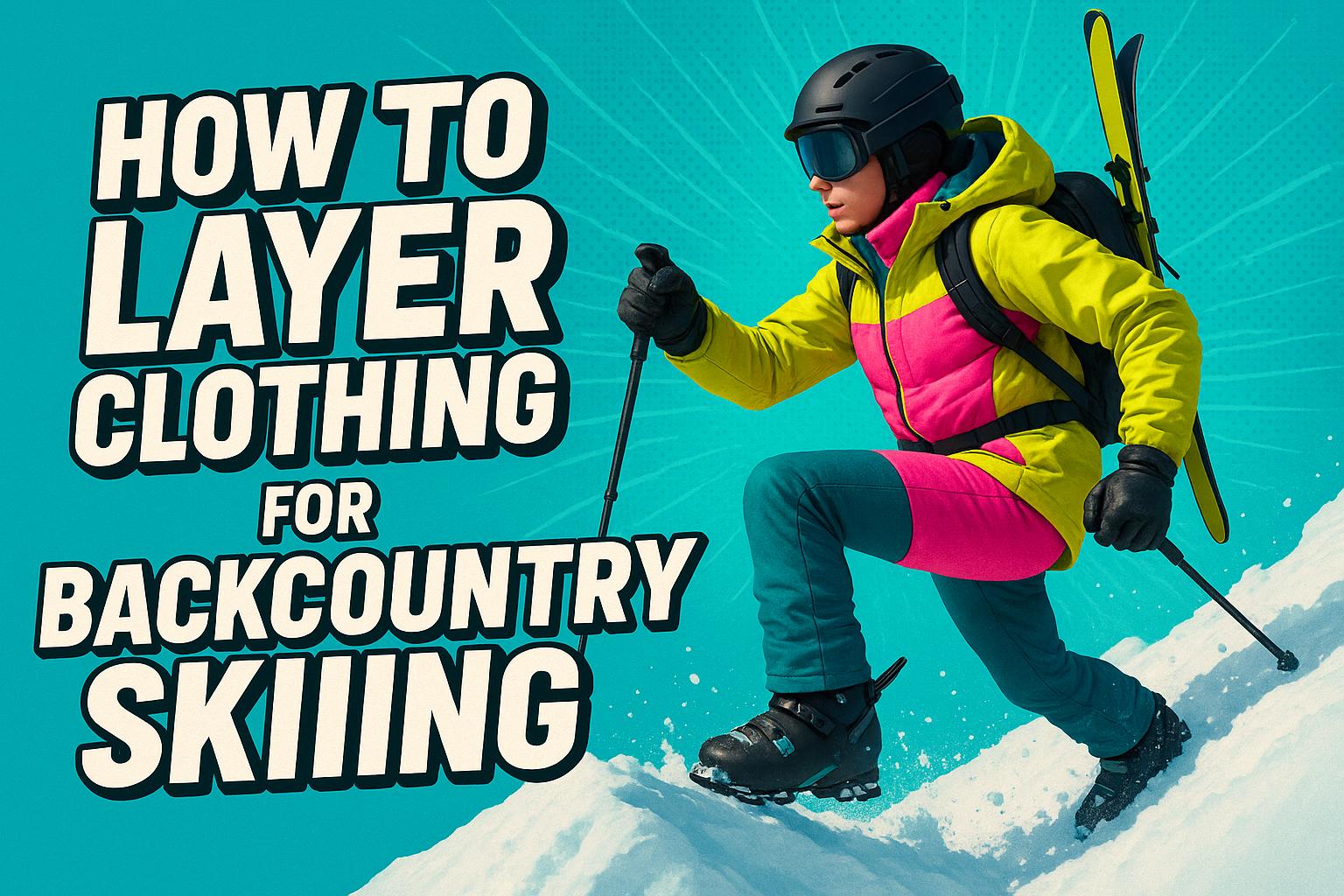




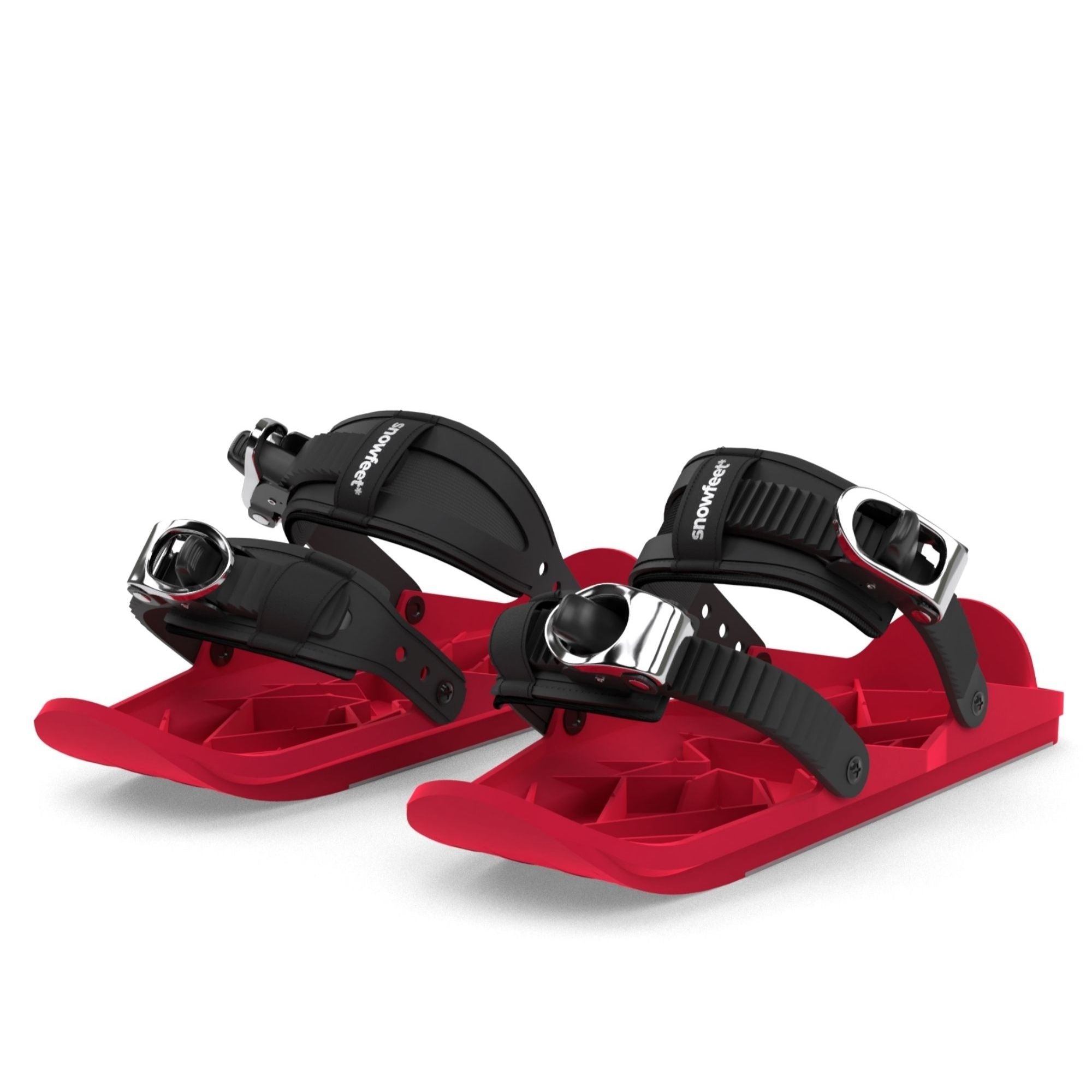
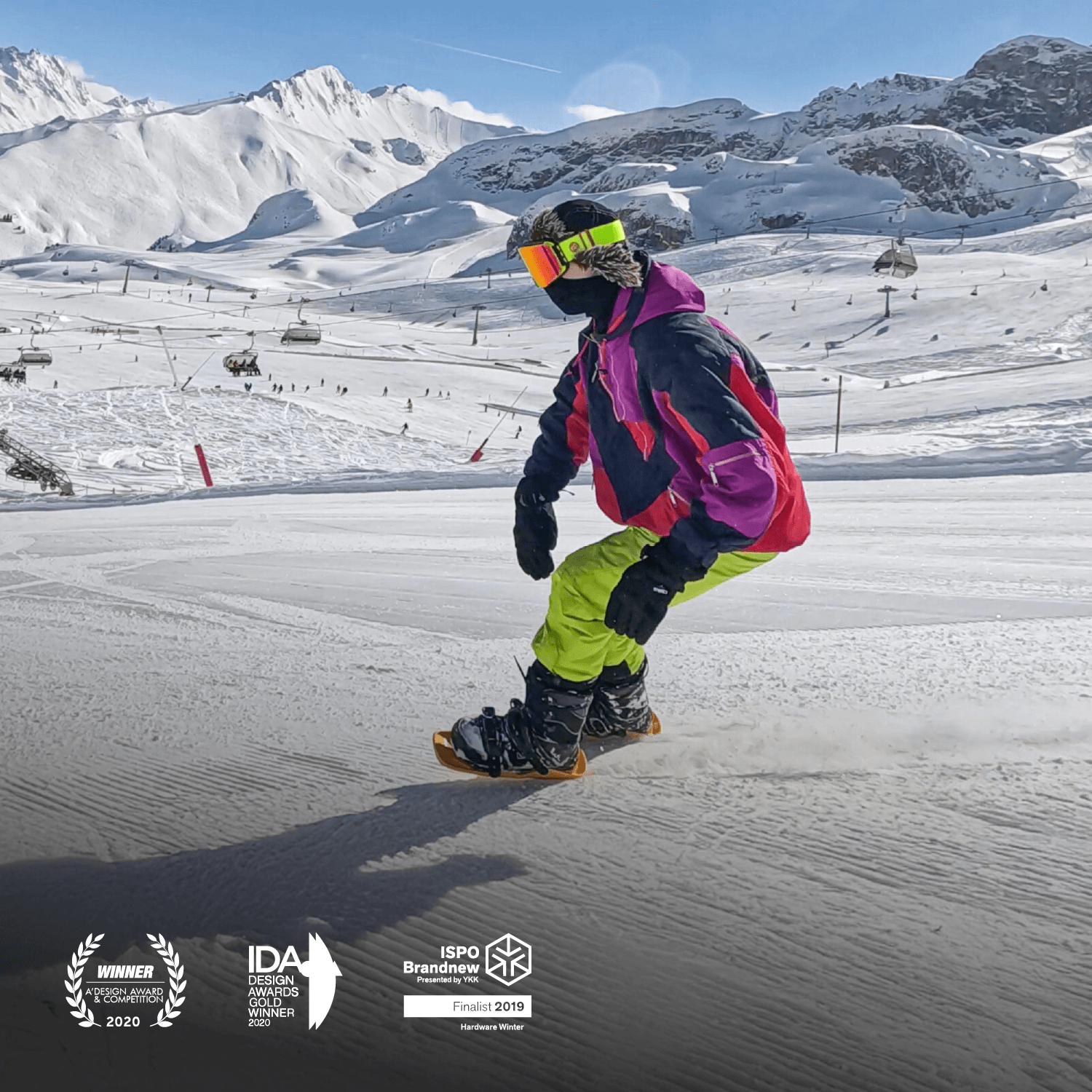




Laat een reactie achter
Deze site wordt beschermd door hCaptcha en het privacybeleid en de servicevoorwaarden van hCaptcha zijn van toepassing.